
Whether you're mixed climbing in Scotland, pumping out on pure Continental ice, or (whisper it) dry tooling, a pair of technical axes are your key weapons. Think of them as an extension to your body, the vital interface between your hands and the mountain. In this comparison review, seven pairs of techy axes from leading brands go head to head. Which is the winner? Well there's no one right answer. The choice of axe is a personal thing, based on what exactly you plan to do with it, and on that more elusive and subjective quality, the 'feel'. Every climber will have their own favourite; hopefully this review will help you choose yours.
Testing
We've been using this selection of tools since autumn 2017. In addition to putting them through their paces on Scottish winter routes, as conditions have allowed, we conducted head-to-head comparisons between them all in more controlled environments, both dry tooling and an indoor ice wall, Glasgow's Snow Factor. Input has been provided by a test team of several climbers, and since every member of the team had their personal favourites, the verdicts in this review reflect the consensus opinion on each axe.
|
Make and model |
Pros and cons | |
|
Climbing Technology Price: £160 Weight min: 514g Weight hammer: 568g Weight adze: 562g
|
Pros: Affordable and very light, this new model from CT is an excellent all-rounder for general mountaineering through to the mid grades. Also excels on ice. Cons: Lacks the mixed climbing performance of more technical models. Does not feel as durable as heavier axes. |
|
|
DMM Price: £200 Weight hammer: 680g Weight adze: 682g
|
Pros: A solidly-built all-rounder with superb geometry and balance for steep ground performance, the Apex should take you from mountaineering through to the mid/upper grades with ease. Cons: Not the lightest. More technical tools with an offset handle will have the edge on high grade ground. |
|
|
Edelrid Price: £180 Weight min: 625g Weight hammer: 666g Weight adze: 674g
|
Pros: A well-built and capable technical tool at a very fair price, the Rage offers a lot of performance for your money. Cons: With a small handle that can't be adjusted, the Rage is not going to fit larger-handed climbers. Its top-heavy balance is an acquired taste too. |
|
|
DMM Price: £220 Weight hammer: 705g Weight adze: 707g |
Pros: Built to take hard knocks and still come out swinging, the Switch is the work horse among the more technical axes here. Performance on the mixed is excellent. Cons: With its large (fixed size) handle and overall weight the Switch best suits a bigger, stronger climber. Can feel a blunt instrument on more delicate ice climbs. |
|
|
Petzl Price: £190 Weight min: 531g Weight hammer: 601g Weight adze: 612g |
Pros: With its lightness, neutral balance and superb geometry, the NOMIC is a joy to climb with on both mixed and more especially ice. Adjustable handle and excellent picks. Cons: Not the greatest build quality, with head wobble issues widely reported. The new version of the NOMIC may have solved this problem, but the jury's still out for now. |
|
|
Black Diamond Price: £230 Weight: 691g |
Pros: A well-built axe with an excellent (and adjustable) handle, and a really good geometry for technical climbing on both ice and mixed. Cons: Expensive. The built-in hammer makes this version of the Fuel quite weighty (and head-heavy). The lack of an adze is a disadvantage for an all-round tool. |
|
|
Grivel Price: £200 Weight min: 665g Weight hammer: 733g Weight adze: 730g |
Pros: Superb geometry and neutral balance (minus adze/hammer) make this a great axe to climb with. The ice picks are awesome too. Cons: The small (fixed size) handle will not fit larger climbers, while its shape is an acquired taste and its plastic finish feels cheap. With the addition of adze/hammer the Tech Machine is the heaviest tool on test. |
About the review
All the quoted weights were measured on our kitchen scales. None include head weights but all do include mixed picks and the additional grip tape that most users will add. We have also provided weights with additional hammer and adze, where relevant.
Many other models are available, from the brands featured here and others. The Petzl QUARK, Edelrid Riot and Black Diamond Viper, for instance, would all suit our all-round section, though arguably none are quite as aggressive as the DMM Apex featured here.
We have awarded no 'best in test'. Even within the remit of this review, different tools will suit slightly different uses. In addition, the choice of axe is a very personal thing, and based largely on feel. One person might like the fit of a particular handle, or the specific swing and balance of an axe, while their partner prefers a different model altogether. When choosing a pair of axes the best advice is to handle every option in the shops - with gloves on.
All-round technical axes
Less adapted to the very steepest and most technical ground, but better for all-round mountaineering, these axes are ideal on days that involve a variety of terrain. Without an elaborate moulded handle they can be plunged spike-first into deep snow, and more easily incorporated into an axe belay. They might not be your first choice for a day of dry tooling, the very steepest ice or technical modern mixed climbs - however these are still very much climbing axes, with more than enough performance in the tank for Scottish IV, V and VI, or Alpine fun. Let's face facts - in days gone by routes far harder than most of us will ever attempt got climbed with axes far less refined than these.
Climbing Technology North Couloir Axe £160
Weight and balance
At just 514g (minimum weight) this is a real lightweight option, perfect for long mountain days - think alpine classics or big Ben Nevis ice routes. Balance is pretty neutral in the hand, though with the addition of hammer and adze attachments the weight does shift towards the head. For pure ice climbing some users might appreciate a bit more oomph for penetration, and here's where the additional pick weights come into play (a set come as standard with the axe and they can also be bought separately should you lose the first lot). With these weights fitted the swing is great, with good solid penetration into hard ice despite the overall lightness of the axe. For pure ice climbing we think the North Couloir really shines, in fact it's one of the best performers in the review! But thanks to its sheer lightness the North Couloir doesn't have the bombproof feel of the heavier models, and when mixed climbing this doesn't inspire quite as much confidence as a real workhorse of an axe might. When doing stein pulls or torquing, for instance, we can feel a very marginal flex in the shaft; however to be fair, CT did tell us that it wasn't designed with dry tooling uppermost in mind! This axe might not be the best choice if you anticipate giving it a lot of rough treatment - regular drytooling or loads of Scottish mixed for instance, but if saving weight is a priority then it's a bit of a winner.
Handle and shaft
Slightly less aggressively curved than its nearest relation in this review, the DMM Apex, the geometry of the North Couloir may be less well adapted than the crank-handled axes on test here to steeper and more technical ground (and arguably slightly less techy than the Apex too), but the flipside of this is that it's a better mountain all-rounder than all but the Apex. For climbing moderate-angled ground, this T-rated shaft works very well, and it can also be easily incorporated into an axe belay if necessary. But when things get harder the North Couloir is still very capable. We've used it on vertical ice, drytooling up to M7, and tech 6 in the real world, and it's not the axe that's holding us back!
Formed from a simple rubbery cover over the shaft, the handle is comparatively basic, with minimal sculpting for extra grip compared to some of the more radical options on test. It has a narrower diameter and offers slightly less hand space than the Apex. There's still room for bigger hands in thick gloves, but we think the dimensions best suit small-to-medium hands - and the handles are not adjustable for size. Unlike the full-on handles of the more technical axes, the North Couloir can readily be plunged shaft-first, and to make this even easier the grip rests can be removed, giving it more adaptability as an all-rounder. The spike is good and sharp, with a hole that's big enough for a clip-in leash.
The lower hand rest is a bit smaller than the Apex's, which again better suits a smaller hand; the upper hand rest is significantly smaller still, and can feel a bit inadequate if you've got thick gloves or cold hands. On steeper mixed, too, using the upper grip rest can feel like it's slightly pulling the pick out of marginal placements - perhaps no surprise given the less extreme geometry of the shaft.
Picks and extras
Both ice and mixed pics are available, and are sold separately at £37. With two bolts/nuts, and the need to exactly align the holes (or risk stripping the bolt threads - we managed to wreck two) changing them is a bit fiddly. The T-rated mixed picks are slightly beefier and more chisel-shaped, and feature a serrated top; however they are still skinnier and more pointed than the other mixed picks on test, and don't feel quite as tough. Perhaps the metal is softer than some - we managed to significantly blunt them after one day on a mountaineering route and a single dry tooling session. The ice picks are really very slender, and best saved for pure ice, for which purpose they are ace. For all-round mountain use we'd definitely stick with the mixed picks, and treat them with a little more care than some others. As with the Nomic (see below) a neat touch is the addition of a little cutout in the back of each pick, which allows you to slot in a separate removable adze and hammer. The axe functions with or without this additional piece, which is great if you're dry tooling or ice cragging one day, and then the next day heading for a mountain route. Bucking the trend for smaller fittings, the adze and hammer on the North Couloir are large, and both extend far back from the shaft. This helps them clear the curve of the shaft, which for clearing crud or whacking in pegs is a distinct advantage. The axe can be bought with adze and hammer included at a very good value £170; alternatively the attachments can be bought separately at £33 apiece.
Best for:
A new model this season. For a dedicated mixed or dry tooling axe, we would look elsewhere, but as an all-round, go-anywhere winter and alpine tool, the North Couloir is very capable and at £160 (or £170 with adze/hammer fitted) represents very good value. And on pure ice it's a joy! Slightly less aggressive than the other tool in its category, the DMM Apex, it best suits climbers who want one axe to do a bit of everything, from moderate mountaineering through to mid-grade ice and mixed routes. The design and finish are a little basic, but this is reflected in the price tag. It's not as durable as some heavier axes, but if you're primarily looking to save weight rather than smash it around on thuggy Scottish mixed routes then its lightness will be an advantage.
Climbing Technology say:
Technical ice axe designed for ice climbing and technical mountaineering. Icefalls, north faces and goulottes are all ideal terrain for this ice axe. The possibility to fully modulate the tool with various accessories gives it a unique versatility within its category. The lightness and the precise balance makes this piece of equipment suitable for both men and women.
DMM Apex £200
Weight and balance
Ostensibly quite similar to the North Couloir, the Apex feels more solid and reassuring in the hand - this is an axe that can clearly take a battering, and it's very happy torqueing, stein pulling and all that mixed climbing nonsense. At 680g this may not look like a lightweight option on paper, but the neutral balance helps it feel less weighty in the hand. The Apex is really nice to climb with. Its weight also includes DMM's picks that come integrated with an adze or hammer; for many other axes you'll be attaching these as extras and paying a weight penalty in the process. For all-round Scottish use an adze is useful, and more importantly a hammer can be considered more or less essential, so the Apex's weight has to be considered in that context.
Handle and shaft
For an all-round axe the geometry of the Apex is quite radically bent - it's a more pronounced curve than the North Couloir's, and we think this does help make it slightly more confidence inspiring on the steep stuff, for which the Apex is really well designed. The exaggerated curve works really well when you're hooking for instance, and helps clear bulges on ice too. The swing is nice and positive, and there's good feedback when you're climbing ice. DMM have clearly thought long and hard about the shape of the shaft. Putting the curve near the head end leaves you with a long straight section running down to the spike, which is just what you want if using it piolet canne (walking stick mode). Meanwhile, when daggering that radical curve can be an advantage, since it can help lift your hand out of the snow and give you something to really push down on.
With dimensions better suited to medium-larger hands, the handle is very slightly sculpted for easy gripping, and with its non-slip, insulating rubbery overlay it feels really good in the hand. Compared to the more techy offset-handled axes, simplicity is key here - if you're plunging the shaft you don't want an elaborate shape. If you really want to go minimalist then both the bottom and upper plastic grip rests are removable too. Generously sized, these grip rests offer maximum support on steep ground, and also a good measure of knuckle protection.
Picks and extras
Both ice and mixed picks are available, and come with either an adze or a hammer integrated into the pick. In addition, you can have the option of a small adze or a larger 'mountain' adze. In terms of cost, the fact that hammer and adze are integral may prove better value than axes for which the adze and hammer are sold separately. Should you need replacements, picks retail at £33 each. These picks are interchangeable between the Apex and the Switch, which is a bonus if you've invested in both. Attachment via a twin nut/bolt arrangement is fairly standard, though DMM's take on this setup is perhaps marginally less fiddly than some. The burly mixed pick would be our first choice for most Scottish scratching, though it's way too chunky for pure ice; we've had the ice pick out on typical Scottish mixed ground this winter too, with no ill effects so far. It's probably fair to say that DMM's picks are a little more basic than some, but perhaps only the more discerning user is going to notice that. Owing to the curve of the shaft, the tiny hammer is quite awkward to use - a common complaint with technical axes these days. Whether that bothers you will depend how often you find yourself leathering pegs into cracks in desperation.
The Apex comes as standard with pick weights, which add a bit of heft to the swing to improve penetration in hard ice. We would only bother adding them if climbing pure waterfall ice - not a frequent occurrence in the UK. We did find them an advantage on the indoor ice session.
Best for
If you operate largely in the Scottish winter mid grades, with occasional forays onto harder stuff, and the odd easier day thrown in too, and you want one axe that can capably handle it all, then the Apex may have your name written all over it. On steeper ice or mixed its aggressively curved geometry is confidence inspiring; but at the same time the Apex is not too techy and radical for moderate ground. Well balanced, versatile and well built, this axe is a real winner for a Jack-of-all-trades.
DMM say:
Despite its aggressive appearance, the Apex is comfortable across a wide variety of terrain. The shaft curve has been precisely designed to give clearance and stability on steep ground while remaining effective when plunging, daggering and moving on easier angled snow slopes.
The Apex is fully T rated, and the head and handle are double riveted onto the lightweight aluminium shaft. This robust construction lets the Apex handle the burly nature of winter climbing.
The hot forged handle also strikes a balance between performance and versatility. A straight design with a spike on the base makes plunging the Apex into snow and ice easy when moving on less steep terrain. The upper and lower hand rests allow hand matching, crucial to the Apex's performance on steeper ground.
High end technical axes
More aggressive and specialised, these models are ideally suited to dry tooling, high end mixed climbing and very steep ice. Their radical curves are made for steep ground and tenuous technical moves, while their big moulded handles are easier to hang from and permit a variety of hand positions. However, outside their high-performance niche these thoroughbreds can be overkill. They are less than optimal on easier mountaineering ground, where injudicious use can actually make them a bit of a liability. Arguably only worth investing if you're regularly operating above about Scottish VI.
Edelrid Rage £180
Weight and balance
At 625g, minimum weight, this may not be one of the heavier axes on review, but add the adze (674g) or the hammer (666g) and the weight begins to mount. Reinforcing the impression of overall weight, the Rage is fairly head-heavy, and always feels like it wants to swing forward and bite into ice. That's great if you're ice climbing, but less welcome on fiddly mixed ground where you're not often simply going to be swinging the axe. Because your wrist needs to work harder to keep it upright and stable, it can be relatively tiring to wave above your head all day - one for the stronger climber maybe. The upside of this feeling of weight is that the Rage is solid and well-built, inspiring confidence that it can take the hard knocks of Scottish mixed. You might think that adding the adze and hammer would exacerbate the already-head-heavy feel, but we can't honestly say we've noticed; for all-round Scottish climbing we've just been leaving them on all the time.
Handle and Shaft
The curve is placed at roughly the middle of the shaft - others tend to be further towards the head end. In terms of daggering or plunging the axe on easier ground it's clearly advantageous to put the curve nearer the top, but for actual climbing on steeper ground we can't say the Rage's geometry feels in any way a disadvantage. It's quite a radical beast, and once we got used to its feel we have liked how it climbs.
Moulded from very tough-feeling plastic, the Rage's handle is as durable as the rest of the axe. It is sized on the small side though, with no adjustment option, so if you have larger hands it's a tight fit - particularly when wearing insulated gloves, when at least one of our reviewers finds it too small to really use. Try in the shop - with gloves on - before you buy. If it does fit you (anyone with smaller-to-medium hands should be OK) the main hand position feels nice and natural, with a pronounced incut for the trigger finger that helps the swing feel controlled. Both the lower and the upper grip rest are on the small side, something you might notice with larger hands and thicker gloves, when the upper grip rest in particular doesn't feel quite adequate. At the same time, the big 'heel' on the rear of the upper rest digs into the hand when you're pulling straight down, and in our experience this can feel like it's getting in the way of the natural way that you'd hold the upper grip - other handle designs are more rounded here. Some of our reviewers feel that hand swapping is a bit hampered on the upper grip rest too.
The sharp spike at the base allows the Rage to be used in walking mode, which boosts its all-rounder credentials. With a large hole both here and at the head, it is easily compatible with clip-in leashes.
Picks and extras
Edelrid have three pick options available for the Rage - Ice Blade, Mixed Blade and Alpine Blade - all of which are compatible with the adze and hammer. All of these picks are very similar, the ice and alpine picks having almost exactly the same tooth configuration with the removal of a few. For general all-round mountaineering that will cover you in all situations it's probably best sticking with the mixed picks.
The Rage has a large and effective adze and hammer attachment, sold separately at £25 each. Of all the axes on test we found these to be among the best and most effective at driving in gear and clearing/digging snow. The hammer is large and easy to use, thanks in part to the shaft curving gradually in the middle rather than up towards the head.
The Rage also comes supplied with head weights for ice climbing. Instead of the standard arrangement of bolting them onto the picks, they fit into the eye of the head. We think this is a really neat arrangement, but since the Rage is quite head-heavy even without weights, we're not convinced we'd often fit them. The exception would be for pure ice, where we've found the head weights do noticeably improve penetration.
Best for
A capable technical tool at a middle-of-the-pack overall weight, the Rage also feels solid and well built. Its head-heavy balance takes some adjustment, but once you're used to this the performance on steep mixed ground is good, while that swing is a positive advantage on ice. With no size adjustment the handle will either fit you or not, and unfortunately anyone with larger hands need not apply. For a technical tool, it's a great price though!
Edelrid say:
An extreme tool for demanding mixed routes and steep ice.
DMM Switch £220
Weight and balance
The Switch is not a lightweight option by any means, at a hefty 705g. However the balance feels pretty neutral in the hand, not too head-heavy, so if you have the strength to wield these axes all day then they are still good and precise for more technical mixed climbing. The swing feels powerful and natural, and though the addition of pick weights might improve its ice penetration the Switch would then be a big beast indeed, and we haven't been able to bring ourselves to try climbing outdoors with this extra weight! Either way the Switch is a bit of a hefty instrument on pure ice, and arguably better suited to mixed abuse. The upside to its weight is a seriously solid construction, which includes double rivets at both head and handle. In terms of confidence-inspiring build quality, the Switch feels like something a blacksmith might have forged, in the words of one of our test team! If you are looking for a workhorse that can be relied on to take long term abuse, our money is on the Switch. Remember too that the overall weight includes the built-in adze or hammer, and that when you factor in the weight of these as additional pieces on other axes they're generally not so different to the Switch.
Handle and shaft
As a technical tool for steeper ground, the curved geometry of the Switch is excellent, offering secure hooks and plenty of clearance on bulging ice. It's a bit radical-feeling on moderate ground though; on slabby ice for instance we've found we have to adapt our swing a bit to get the best from the Switch.
Hot forged from a single piece of alloy, overlaid with a rubbery outer, the handle is perhaps a little less sci-fi looking than some, but it is as tough as the rest of the axe. The Switch boasts 'T Rated Integrity Construction' which basically means that the whole thing is T-Rated, from the pick, through the shaft, to the clip in point at the base of the handle. Both in terms of length and diameter, the handle is the biggest in this review - and it doesn't adjust for size. Users with smaller hands will find it a bit much, but if you have larger mitts it's a winner - and it comfortably accommodates insulated gloves. Both lower and upper grip rests are sized in proportion to the rest of the handle, offering plenty of support and helping control the swing. Being forged alloy rather than plastic add-ons, the grip rests will never break or need replacing - not something that you can say about every axe in this review. At the base there's no spike, just a serrated ring. This is a mixed blessing. On steep ground a spike is arguably something of a liability; but for walking on steep snow - at the top of your route, say - the lack of a spike may at times be unwelcome. On balance we feel it's no big deal, but arguably it does slightly mitigate against the Switch as a mountain all-rounder. The hole here, and at the head, is big enough to easily fit clipper lanyards without need for an additional cord loop (though some people will prefer to add one for other reasons).
Picks and extras
Both ice and mixed picks are available, and come with either an adze or a hammer integrated into the pick. In addition, you can have the option of a small adze or a larger 'mountain' adze. In terms of cost, the fact that hammer and adze are integral may prove better value than axes for which the adze and hammer are sold separately. Should you need replacements, picks retail at £33 each. These picks are interchangeable between the Apex and the Switch, which is a bonus if you've invested in both. Attachment via a twin nut/bolt arrangement is fairly standard, though DMM's take on this setup is perhaps marginally less fiddly than some. The burly mixed pick would be our first choice for most Scottish scratching, though it's way too chunky for pure ice; we've had the ice pick out on typical Scottish mixed ground this winter too, with no ill effects so far. It's probably fair to say that DMM's picks are a little more basic than some, but perhaps only the more discerning user is going to notice that. Owing to the curve of the shaft, the tiny hammer is quite awkward to use - a common complaint with technical axes these days. Whether that bothers you will depend how often you find yourself leathering pegs into cracks in desperation.
The Switch comes as standard with pick weights, which add a bit of heft to the swing to improve penetration in hard ice. We've experimented with these down at the ice wall, but didn't feel they were necessary on an axe this bulky. For all-day use outdoors we think they just make the axe too heavy overall.
Best for
It's not a light tool, by any definition, but if you have the strength to wield it above your head all day, the advantage of the Switch is its bombproof feel. This is without doubt the toughest of the more technical axes on test, and should offer years of reliable service. For general Scottish abuse this is a strong contender, with a neutral balance and aggressive geometry that help it feel good and precise for mixed climbing. It's a bit hefty for pure ice though, and the big (non-adjustable) handle will only suit larger climbers.
DMM say:
Radically curved to maximise clearance, it is the perfect partner for the most outrageous mixed, ice, and dry tooling routes around.
The Switch is instantly recognisable as a top end ice axe. An aggressively curved shaft gives optimal clearance for steep terrain. Both the shaft and pick are T-rated, which along with the full strength handle and double riveted construction, means the Switch can stand up to the harshest treatment. The handle is CNC'd from a solid block of aluminium to maximise ergonomics and make the Switch highly stable when hooking through thin terrain. Full strength upper and lower rests allow you to make use of the full range of modern mixed climbing techniques.
Petzl NOMIC £190
Weight and balance
The NOMIC must be one of the most popular technical tools on the market, and a great part of its attraction is its relative lightness. At just 531g (increasing to 601g/612g for hammer/adze) this is the lightest of the more technical axes on review, by some margin, and has a nice neutral balance. For more technical mixed climbing where you're not just swinging the axe, this is an advantage, but for pure ice climbs some users might appreciate the addition of pick weights to give the head more oomph and penetration. If reports from numerous users over the years hold any weight, this lightness comes at a price - durability issues. With all that hammering and torqueing etc, mixed climbing is particularly hard on the head, and head wobble is a widely known problem with long term heavy users of the NOMIC. Why this happens is a topic of debate. Possible culprits include the fact the head is attached with only one rivet; the relative shortness of the head section inside the shaft; the lack of any glue; or a simple mistake with tolerances.
It's worth noting that new versions of Petzl's three technical axes, the QUARK, NOMIC and the ERGO (all Petzl's model names are capitalised), will be out next year. We've seen them, but not yet had a chance to test them in anger. To address durability concerns, Petzl have made a couple of key changes, for instance making the head section longer inside the shaft, and adding a plastic insert to absorb any possible movement. We're told the new heads are 50% stronger. Time will tell.
Handle and shaft
Its curves are not quite as radical as some, but for an all-round technical tool, the geometry of the NOMIC feels 'just right'. This is simply a fantastic tool to climb with. The ergonomic handle on the NOMIC is one of its defining features. Its satisfying shape and adjustable size mean it's suitable for just about any hand size no matter what gloves you are wearing. It's possible to hold the NOMIC by its primary grip, a combination of index finger on upper grip and palm on bottom, or the full hand on the upper grip. These different options really allow the user to adjust their weight exactly how they want through the axe while also giving the best chance of reaching the next hook. This is especially helpful on thin hooks where you're trying to keep the direction of pull downwards as much as possible.
On the underside of the primary grip rest are a small series of spikes. These stand in place of a proper plunging spike, and although you're not going to be cutting into the ice with them, they do help provide some stability if you're using the axe in 'walking' mode on easier angled terrain.
There is no clip-in point for leashes, but with a bit of hunting you will find a drilled hole through which it is possible to tie accessory cord. This is perfect for attaching lanyards and keeps the clippers away from the main hand rest; however it is a bit more fiddly than attaching the leashes directly to the axe. It's worth noting that one major upgrade for the 2018 NOMIC is the addition of a proper spike for plunging the axe, and this has a hole big enough to take a clipper leash.
The shaft of the current NOMIC has a little flex - enough to notice when it's securely placed. For really physical mixed climbing we're not sure this is particularly a good thing, but ice climbing is a different matter. When you get a good stick in the ice, the feedback you get from the NOMIC is helpful. Another big change in the upcoming version of the NOMIC is the replacement of the simple oval cross-section shaft with a more sculpted-looking hydroformed shaft. This makes the upper shaft easier to grip when daggering. It is also likely to be more rigid, which arguably has pros and cons. Will it offer as much feedback as the current NOMIC? We'll have to report back once we've had one in for review next winter.
Picks and extras
Three types of pick are available - ICE, DRY and PUR'ICE. Effectively, ICE can be considered the all-rounder for Scottish style mixed where you can expect to encounter the full range of rock, ice, snow and turf. It has a steep angle, with teeth that will work on mixed ground but are not too pronounced for use in ice. In terms of ideal uses, the other two are a bit more specialised - the names are self explanatory. All three are interchangeable between Petzl's three techy axes, the QUARK, NOMIC and ERGO. In terms of longevity, other picks do feel a bit tougher - notably Grivel's mixed pick for example, which is thicker - but that said we've had no cause for complaint so far, and certainly in performance terms Petzl's picks are spot on.
The axe comes supplied with pick weights (60g apiece) to increase head weight and improve penetration in ice. For Scottish mountain use our opinion of their usefulness is divided, but for pure ice they noticeably add power to the swing and penetration. Additional adze and hammer attachments are also available - sold separately. These are a decent usable size - the hammer is larger than on the DMM Switch for instance - though as per all modern curved tools the hammer is a bit awkward to wield in anger. If using the NOMIC as a UK winter tool we'd consider these attachments more or less essential.
Best for
With its great performance on both ice and mixed ground, the NOMIC has been the tool of choice for many climbers, for many years. The angles, ergonomics and balance all seem 'just right', making this a brilliant axe for use across all disciplines from the mid to the upper grades. Its lightness is impressive, but has pros and cons - the chief drawback in the experience of a lot of users being some pretty major long term durability issues. The new version of the NOMIC, which will be out later this year, features a number of big changes, from a hydroformed shaft to the addition of a decent spike and clip-in point. Chief among the upgrades, though, is that Petzl have made the head about 50% stronger. Will head wobble be a thing of the past? It sounds promising, though of course only time and a lot of users giving them a thrashing will answer this question. Meanwhile, the current NOMIC remains one of the best-feeling axes to climb with ever made; and as the old stock is cleared, some good deals may be available.
Petzl say:
The NOMIC ice axe allows the entire rock climbing repertoire to be transferred to ice. Thanks to its adjustable ergonomic handle, it offers multiple grip modes and limits the risk of snagging when switching hands. The ICE pick allows easy penetration in any type of ice, and pulls out easily. The modular head has two removable pick weights to balance the axe and propel it into the ice with an exceptional swing. The NOMIC ice axe can also be equipped with a hammer for placing pitons.
Black Diamond Fuel Hammer £230
Weight and balance
This is a new version of the Fuel, with added hammer (the original has none). This makes it more useful as an all-round Scottish winter tool, but certainly adds to the weight. At 691g the Fuel Hammer is not light, by any definition, and over a long day out less strong climbers might notice the difference compared to the original. On the other hand however, it is very solidly built, and inspires confidence on mixed ground or dry tooling. This axe is made to take the knocks. As you'd expect in an otherwise identical axe, the balance is quite head-heavy compared to the non-hammer version. On ice we've found this an advantage, where the weight makes the swing good and powerful, and makes for decent penetration. But for mixed climbing some may find this head weight takes a bit of getting used to.
Handle and shaft
With a handle that cleverly unscrews from underneath to accommodate plastic spacing washers, the length of the handle can be adjusted by about 1.5cm in order to accommodate different sized hands, or to customise the fit for thick gloves versus thin gloves, depending on the weather and what you're doing (dry tooling versus a big snowy mountain route, say). We like rubbery finish on the handle, which is comfy and not too cold - though perhaps gets a bit slippy feeling if it's wet (something we only noticed when dry tooling on a rainy day, to be fair).
At the upper end of the shaft is a large bulge which we have been told is part of what gives the Fuel Hammer its strength. This however does have a few drawbacks. It's slightly harder to hold while ascending easy ground due to its larger diameter, and although probably less of an issue for most folk, you'll have to have a relatively large mouth if you want to swap tools using your mouth - something that is really only going to happen on dry tooling routes however.
At the bottom of the Fuel's handle is a spike for plunging the axe into snow, good for ascending easier ground. The spike also has a large hole that will take any soft of lanyard system. A nice touch here is that this spike is removable, to leave you just with the handle. This is going to be welcome if using the tools in more of a crag setting, where a spike at eye level is just an extraneous danger - or, we suppose, if you want to shed extra weight.
Picks and extras
Both mixed and ice picks are available, and for standard Scottish use we'd generally go for the mixed option. The picks on all of BD's climbing axes are interchangeable, which is a big plus if you already own another model. As they are secured by a single chunky bolt, with no fiddly nuts, changing the picks is quick and easy even in the field. Though Black Diamond include a handy little 'spanner' tool, the bolt can also be turned with anything loosely resembling a large flat head screwdriver - we've used the end of a metal file and the top of another axe pick in the past. Being very robust, simple and easy to adjust, this is by far our favourite system of any of the axes on test. The one drawback is that if the bolt gets misthreaded - we managed on our first go of changing the Fuel's picks - it is quite easy to flatten the thread and render the bolt unusable; make sure it's properly aligned before giving it some welly. No pick weights are available for the Fuel Hammer, but then you'd be unlikely to want them; the head is the weight!
Best for
We've found the Fuel Hammer a brilliant winter mixed tool, and it's none too shabby on ice either. Its aggressive (but not too aggressive), pick angle means this axe will climb the most technical terrain you can swing it at, assuming you've got the arms to do so! Speaking of which, having strong arms when wielding this tool is going to be a plus, as at 691g it's a considerable weight. This weight though is down to its solid build quality, and we are willing to bet that it will take an enormous amount of abuse. The handle is comfortable, the moulded rubber eliminates the need to tape up the shaft, and it's pretty grippy. At £230 this is the most expensive of the axes in this test, however it is also clearly one of the most robust, so it could well be an investment that saves you money over time.
Black Diamond say:
Combining the aggressive ice and mixed performance of the original Fuel with a redesigned head, the Fuel Hammer offers additional swing weight and pin-pounding performance in alpine terrain. The streamlined, hydroformed shaft extends all the way through the grip for responsive feel and rigidity, and the adjustable pommel allows for fine-tuning the fit to suit your hand size and glove choice. The clippable spike is easily removable for days at the crag.
Grivel Tech Machine £200
Weight and balance
In terms of balance, the Tech Machines are quite neutral feeling, which makes them a good all rounder for more technical mixed ground. The swing feels accurate and reassuring, while the addition of adze and hammer attachments helps increase the power of the swing and penetration if you're ice climbing. Without the adze and hammer, and with the thinner ice picks attached, the weight of the Tech Machine is middle of the road in this review; but with the adze and hammer added on this becomes the heaviest of the axes in the review at a massive 733g with the hammer (730g adze). In Scottish all-rounder mode, then, it's really a bit of a beast. On the plus side, however, it is balanced in such a way that some of the slightly lighter axes feel roughly the same weight due to being more front heavy, so requiring more stabilisation at the wrist. In short? We're not overly bothered by the Tech Machine's weight.
Handle and shaft
At 49cm, the Tech Machine is marginally shorter than the other axes on test (by about 1cm - does it matter?). The curved geometry of its T-rated aluminium shaft is pretty similar to that of the NOMIC, and it handles similarly well too. Offering a nice precise swing, good stability on small placements, and plenty of clearance over ice bulges, this is a great all-round technical axe. On steep ground the performance of the Tech Machine is certainly up there with the best.
The very curved, steep angle of the handle is clearly designed with ergonomics in mind - it is almost parallel to the angle of the pick, which means you're gripping it more straight-wristed than perhaps any other axe in this review. In theory that's a more natural and less tiring hand position to hang from. In practise we've found it is not necessarily a decisive advantage, but perhaps more of an acquired taste. With some quite tight angles, and no size adjustment, the handle may prove too cramped for larger hands; for this reason at least one of our review team struggled to climb with the Tech Machine at all.
We're not keen on the textured plasticy finish of the handle, which feels somehow cheap and flimsy (we emphasise that's the covering we're talking about, not anything load bearing). Anecdotally, these handles can get quite mashed up over time, and after a few Scottish routes the plastic on our review pair is already looking a bit worn. Its dual density construction is said to help dampen vibration, which we guess sounds good though we can't honestly say we've noticed a difference.
Matching hands can feel a bit fiddly, due to the radically incut upper section of the main handle. Some users will love it, some of our review team did, but though it's clearly intended to give more control and grip to your trigger finger, and permit different hand positions, a number of us think that the whole area of the handle feels a bit fiddly and over-designed. Sceptics thought that less sculpting might actually have been more effective.
The large hole in the head of the Tech Machine makes this easy to store on your harness using a carabiner or ice screw clipper.
Picks and extras
Grivel are known for their hard wearing metalwork, and these picks are no exception. Both hot forged, the 3mm Ice Blade and the 4.2mm Mix Blade have almost a varnished finish, and feel hugely robust and confidence inspiring. Additional adze and hammer attachments are available, for the considerable sum of £36 apiece, but bear in mind that these do not fit the standard Ice Blade, but only the Mix Blade and the Ice Blade Plus (a variation on the standard ice pick, and one that even some regular Tech Machine users seem to be in the dark about). The additional £72 needed to convert a pair of Tech Machines to a full Scottish winter all-rounder with adze and hammer is effectively an up-front cost, and that's worth factoring in when budgeting for a new pair of axes.
The mixed pick adds a considerable amount of downturn to the axe in comparison to the ice pick. For mixed climbing up to around vertical we have found this downturn a bit too much, and it only comes into its own when things get steeper than vertical. That's not the sort of ground that many of us spend a lot of time on in Scotland! For this reason we reckon the ice picks might actually be more suitable for most mixed climbing, outside of bolted Continental style dry tooling. The drawback here though is that the standard ice picks don't take the hammer and adze attachment, which for many UK climbers is obviously rather important! If you want to fit the attachments onto the ice pick, something we'd recommend for all-round Scottish fun, then you will need to hunt out the Ice Blade Plus (we weren't supplied these for the review, and only latterly discovered they exist at all). It's great to have a choice in pick angle between the all-round performance of the ice pick and the very aggressive downturn of the mixed pick. No pick weights are available, the axe instead relying on the additional weight of the adze and hammer for penetrative power on ice.
Best for
The Tech Machines are not a perfect all-rounder, but will excel on steep technical mixed ground. Their hard wearing picks seem to stand up particularly well to the inevitable punishment of winter climbing. The mixed picks are best suited to steep continental mixed routes with roofs and overhangs, however for the majority of mixed in the UK the ice picks will probably be a better-angled all-round option, and definitely feel tough enough to cope. The radical handle is a Marmite feature - some love it straight away, while others struggle to get used to it at all. For all-round mountain use the hammer and adze are very large and effective, although they do come with a hefty price tag and don't fit Grivel's standard Ice Blade.
Grivel say:
If you want a technical, leashless axe for alpine, hard Scottish mixed or steep ice climbing, then The Tech Machine is axe to choose.



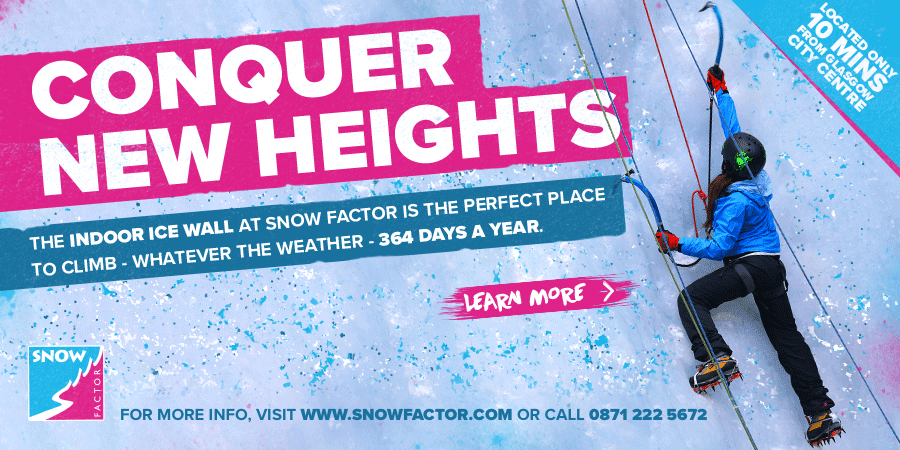

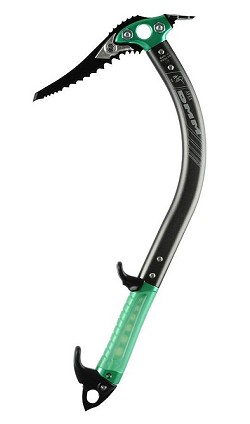
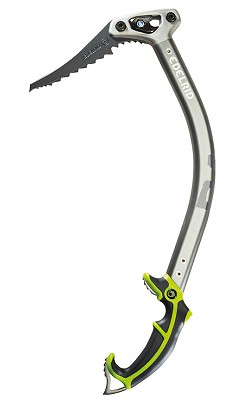
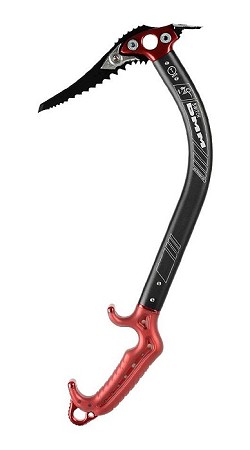
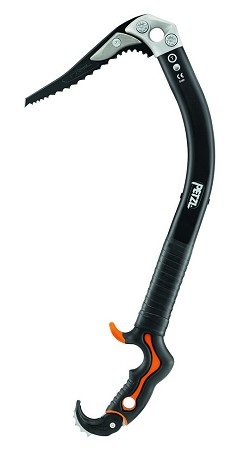
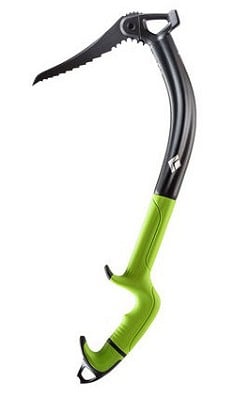
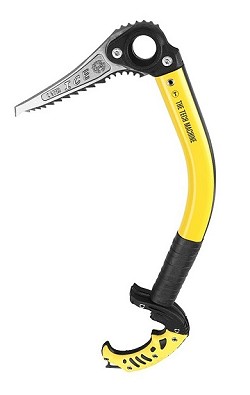



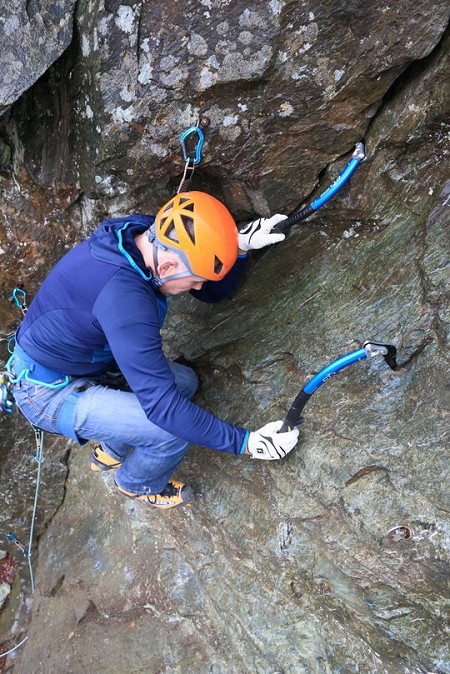
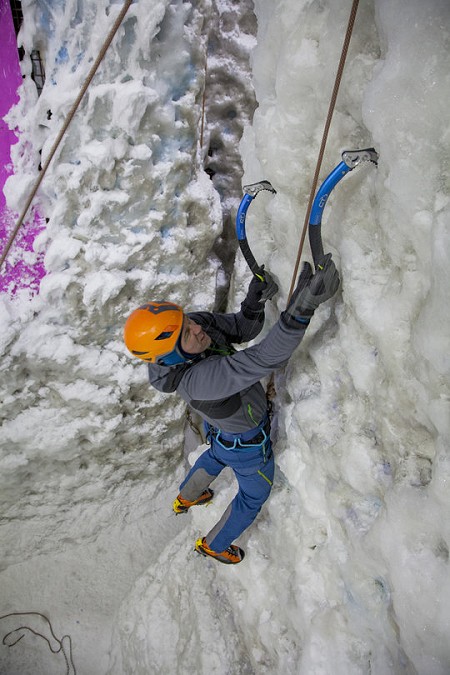



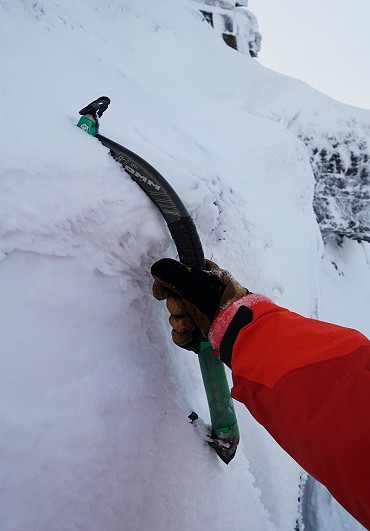
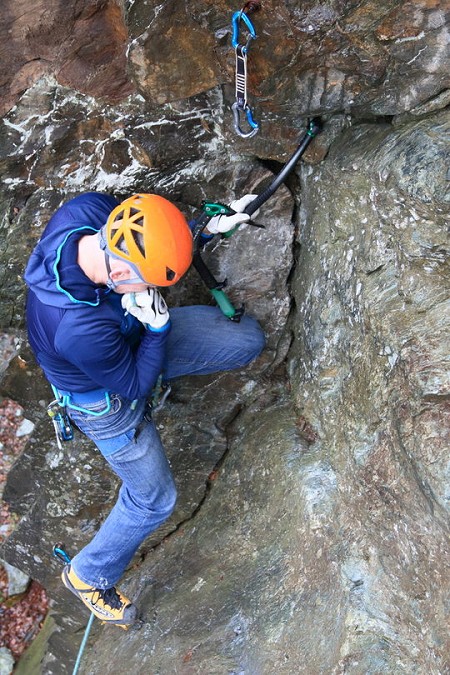
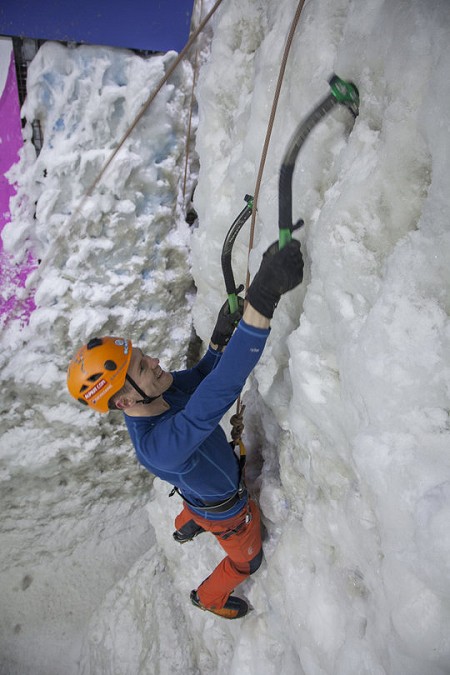
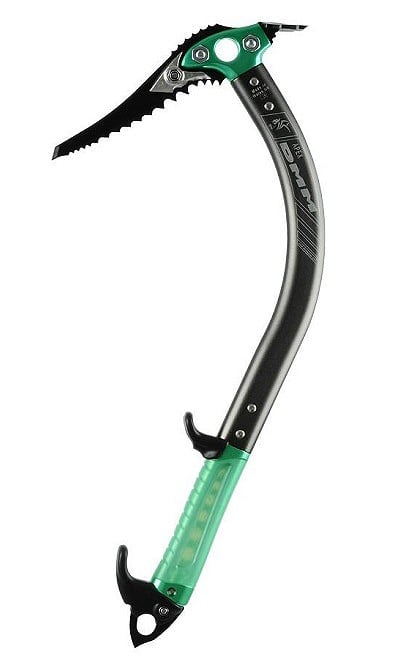


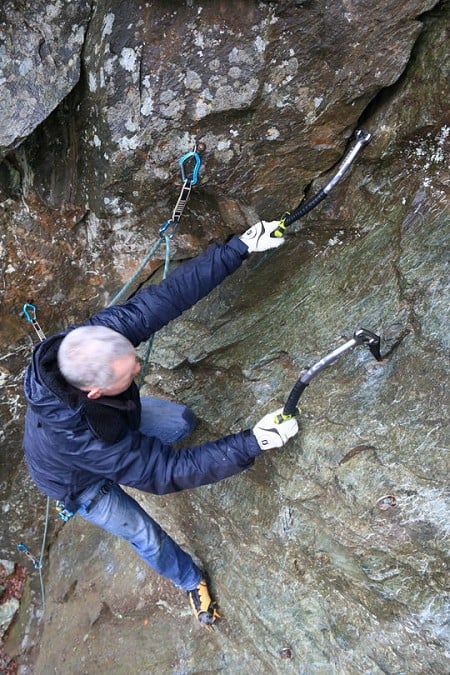
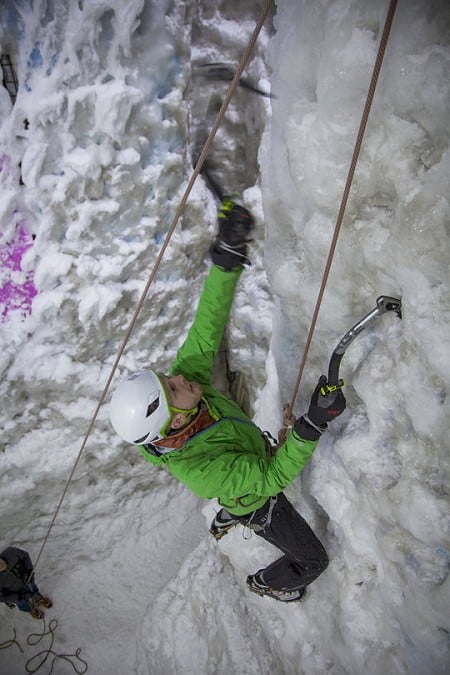
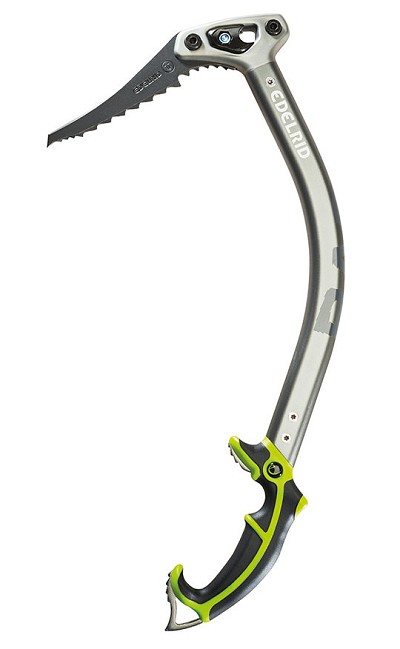

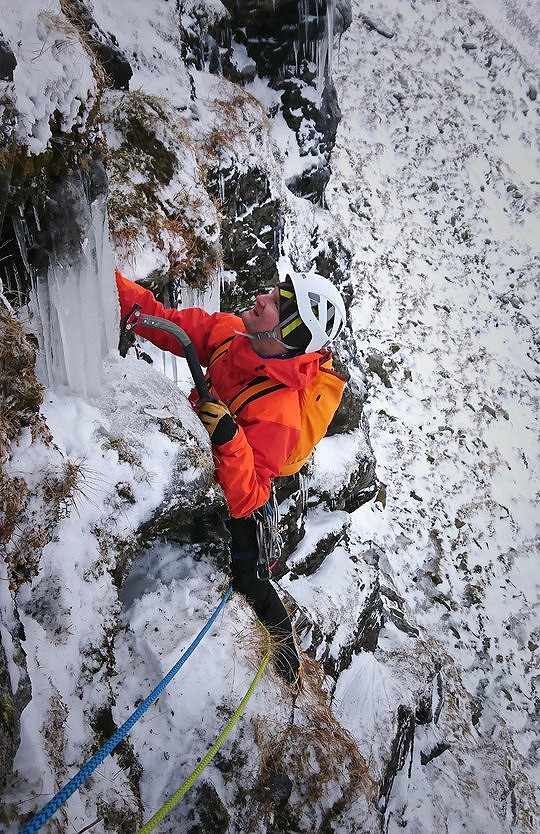
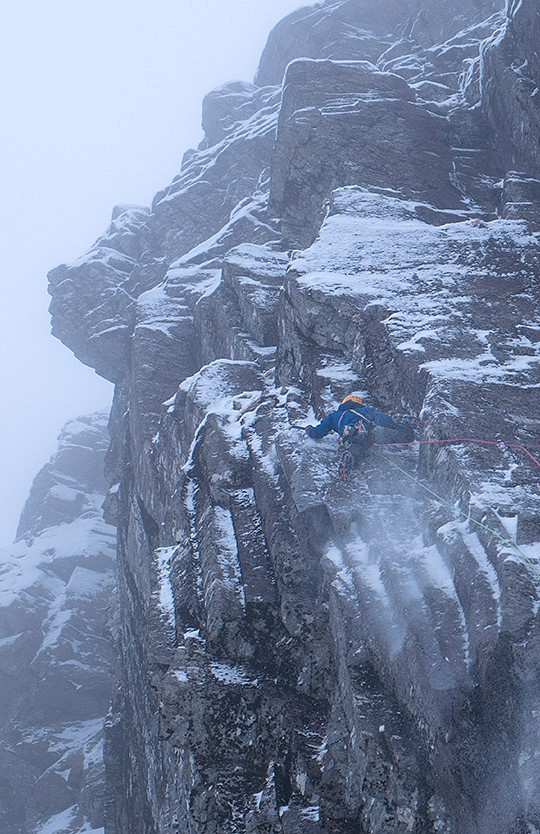
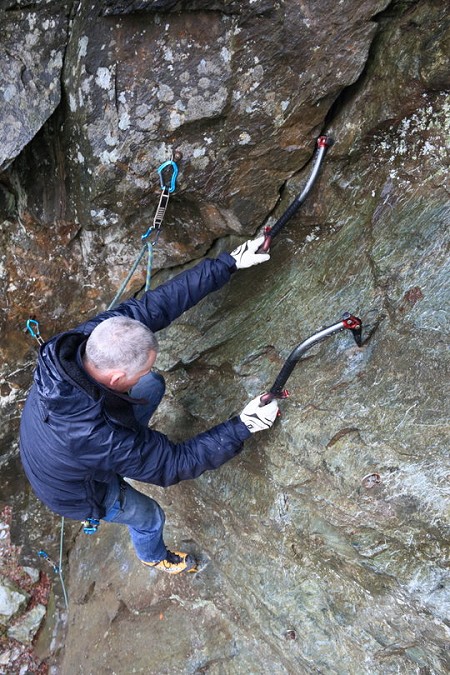
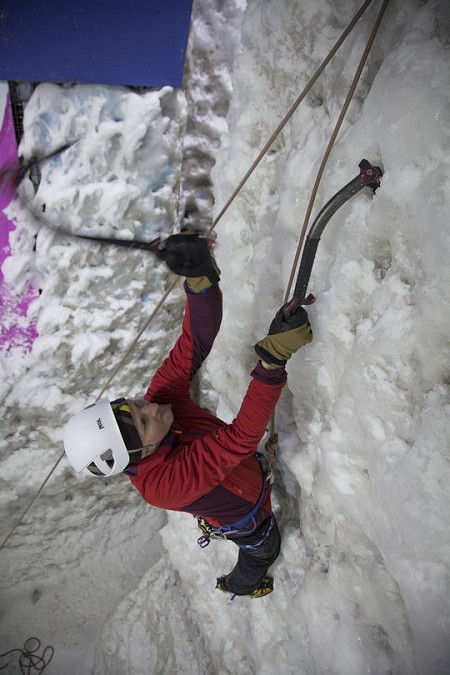



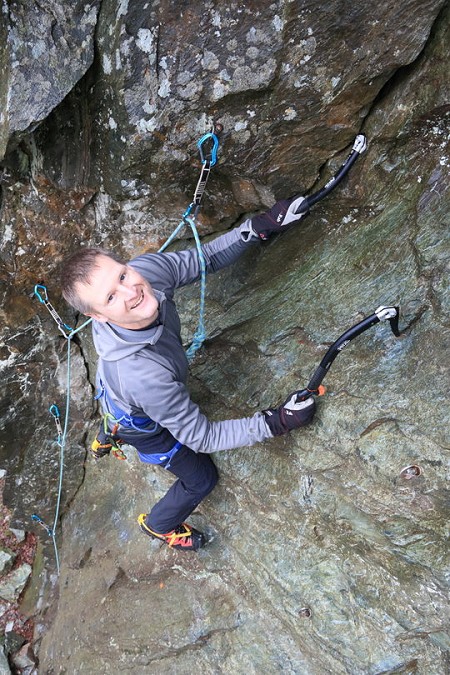
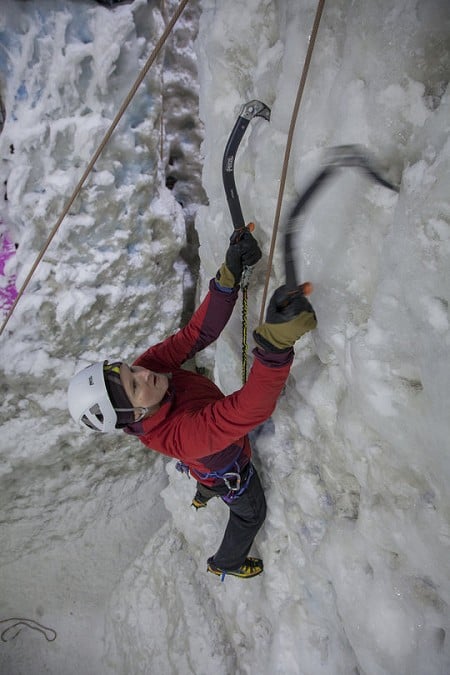
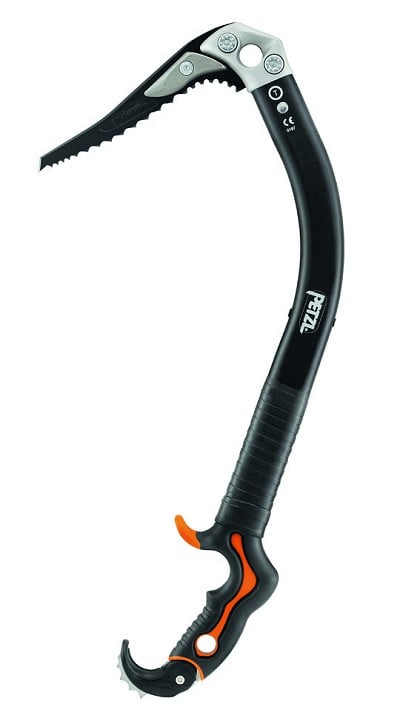


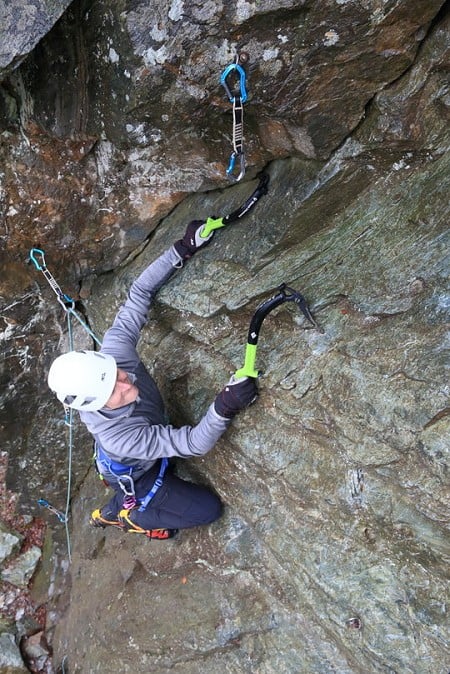
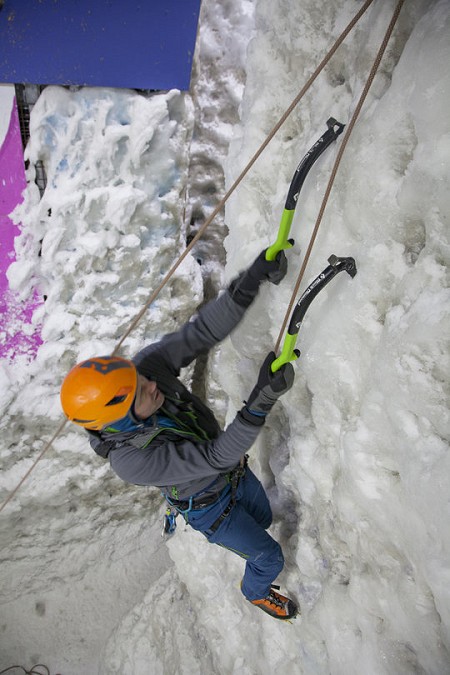



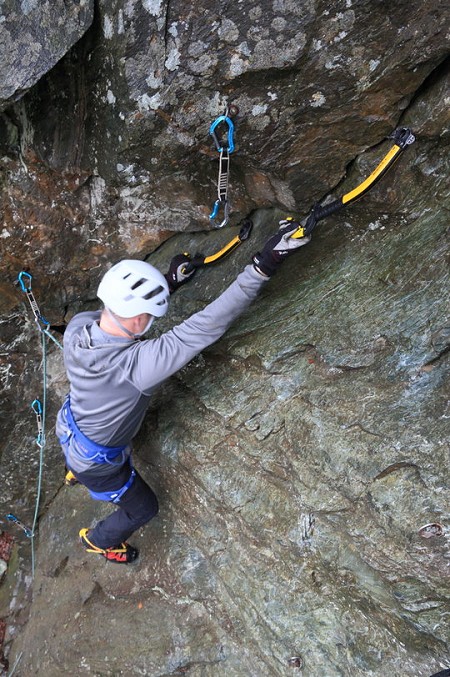

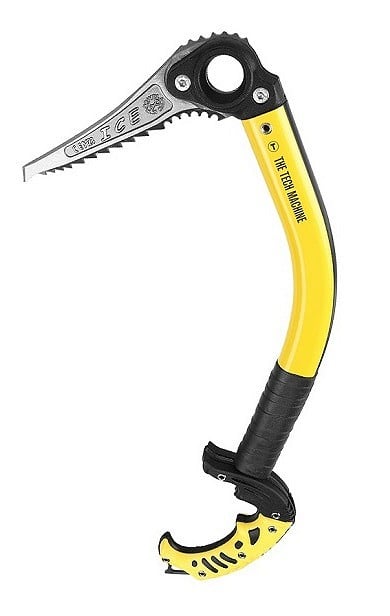









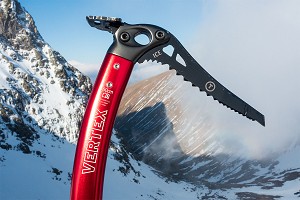
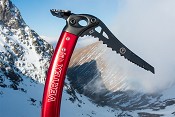


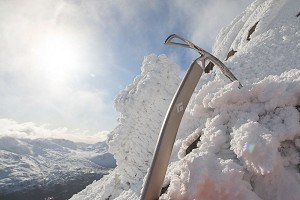
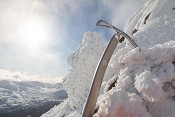
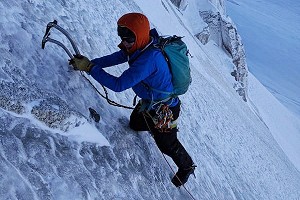




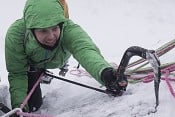


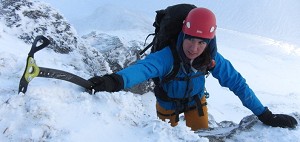

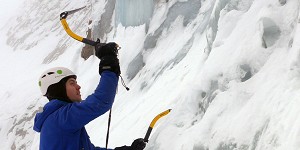


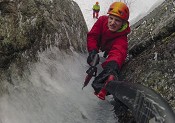
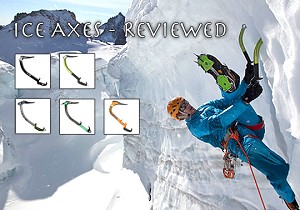

Comments
You actually can get ice picks that fit a hammer and adze for the Grivel tools! Ice Plus Blade. I run them on my North Machines.
Good review otherwise.
in relation to the Grivel axes contrary to the report you can buy ice picks (or at least you could a year ago ) which accept the hammer/adze - I have a pair bought from Needle Sports
Hi Martin (and Tradisrad), thanks a lot for letting us know. None of us knew that, and indeed Tech Machine owners we've talked to didn't either. It's not clear on the Grivel website but I see that Needlesport do indeed sell them. We'll amend that bit of the review now
No wonder there's no best in test, there's no test of the Camp-Cassin X-Dream (which I suspect is to do with their poor UK distribution so no fault of yours). Great handle, good value, amazing on ice, no wobbly heads and pick replacements which are affordable.
Ha, Joe, we didn't want to assign as Best in Test for 2 reasons - Pretty much all axes these days are great depending on what you're wanting to use it for. It's a personal preference thing. On the day we tested at the ice wall with a bunch of folks everyone seemed to have a different opinion. This was a theme that seemed to be recurring throughout the entire time we were testing. Even Dan and I couldn't agree on what was best!